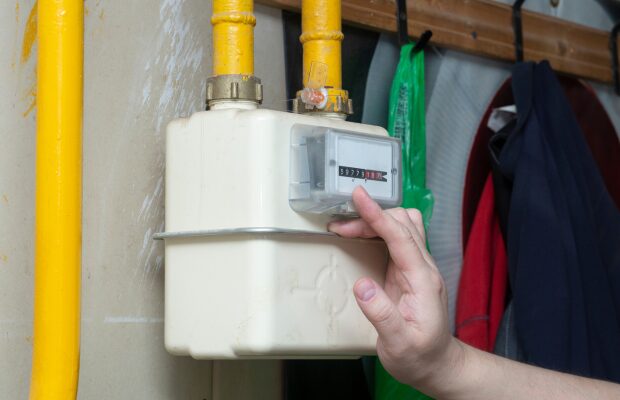When you’re renting a property, it can be difficult to make it feel like a real home.
As a tenant, you often have to accept the décor for what it is – but not always.
In this guide, we’ll provide some great tips on how you can make your rental property feel more homely…
Can you decorate a rented apartment?
You should never redecorate a rental property without asking your landlord’s permission first.
If you view a rental property prior to existing tenants moving out, you could ask the landlord if they would let you decorate before you start your own tenancy.
If you don’t ask, you don’t get, and many landlords will simply be glad that they don’t have to pay painters and decorators to do the work for them.
Allowing tenants to decorate can be a tricky decision for many landlords, because:
• The tenants could decorate in a way that makes the property less appealing to future tenants
• They could cause damage during the decorating process
• They may do a poor job
If your landlord is open to the idea of you decorating your rental property, you should:
• Agree who will pay for the materials
• Agree a colour scheme for the rooms you wish to decorate
• Agree a schedule of work that you should stick to
Can I ask my landlord to decorate?
Your landlord isn’t legally obligated to decorate your rental property – but you can always ask them to if you feel it needs a spruce-up.
Most landlords will undertake some decorating work at the end of tenancies to ensure their property remains appealing to potential tenants.
So, if you feel your new home could do with some TLC, mention this to your landlord.
How can I make my rented house look nice?
There are a host of things you can do to make your rental property look nice, including:
• Add some colour with bedding
• Prop up wall art and prints
• Add some house plants
• Be bold with your furniture
How can I decorate my rental property and not upset my landlord?
If your landlord isn’t open to you decorating your rental property with a new paint scheme, there are plenty of other steps you can take to make it feel like home while also keeping on the right side of the property’s owner…
1 Hang pictures without nails
One of the best ways to add a touch of style to your rental property is through pictures or wall art.
However, some landlords insert clauses into their tenancy agreements either banning hanging pictures with nails altogether or, more commonly, requesting that all holes are made good at the end of your tenancy.
But even if you don’t want to spend the final few days of your tenancy with a pot of filler and a paint brush, that doesn’t mean you can’t hang your favourite pictures.
The best way to hang your imagery is using a self-adhesive strip.
All you have to do is peel back one side of the strip and stick it to your picture frame before peeling back the other side and sticking to your wall. Simple!
But remember to mark out where you want to stick your frame first and make sure you have everything level.
Common question: What changes can you make to a rented property?
Most landlords will be open to you hanging pictures and other items so long as any damage to walls is made good before the end of your tenancy agreement.
However, some landlords will stipulate in their tenancy agreement if nails can’t be used to hang items to walls, so always make sure you read the agreement in full, so you know what’s permitted and what isn’t.
2. Invest in lighting
Many rental properties are painted in neutral tones, with magnolia a huge favourite among landlords.
But even if you can’t paint the walls in a more vibrant colour, you can still inject some life into your property with good lighting.
Lighting is everything when trying to bring out the best in a rental property, so invest your time (and money) looking for signature lamps and characterful shades to add colour and zest to your home’s best rooms.
You can also change up bland white pendants for spectacular fixed lights without having to worry as you can simply replace the pendant when your tenancy is up and take your light with you to your next property.
3. Rent unfurnished and buy well
If you rent a furnished property, it can be tricky to inject your own personality on your rental property.
So, if possible, rent an unfurnished home and buy your own furnishings sensibly.
That means picking up items of furniture that reflect you, but also work in your rental home and another property when it’s time to leave.
Focus on three or four striking pieces, such as a dining room table, classic sofa or a Chesterfield – all of which should be timeless pieces that will age gracefully and maintain their sense of style.
Common question: Can you change curtains in a rental?
You should check this with your landlord, but generally you should be able to change the curtains in a rental property.
Most landlords will insist that the curtains that come as part of the property are reinstated at the end of your tenancy agreement, however.
4. Hide bad flooring or old carpets
While you could always request your landlord changes ageing carpets or flooring, the reality is this may not happen until the end of your tenancy.
So, if you need to conceal either, look at the potential of rugs.
Investing in a quality rug or two can have a long-term benefit in the same way investing in timeless furniture does – because you can take rugs with you when you leave and make them work in a new property.
Even the most neutral rug can add real zing to a room, while colourful rugs can really bring out a rental property’s hidden personality.
Common question: Does my landlord have to replace my carpet and how often should they replace it?
Your landlord is obliged to ensure your rental property is safe and habitable.
So, if the property’s carpet is worn and could be deemed a trip hazard, or tacks are sticking through, your landlord should replace it.
Moreover, if your rental property carpet is mouldy or unsanitary due to extreme wear and tear, it should be replaced by your landlord.
Whether or not your landlord replaces a carpet will depend more on wear and tear than time.
Good tenants will take care of a carpet and look after it, whereas other tenants may not.
So, the lifecycle of a rental property carpet depends more on the tenants and traffic than it does any kind of timeframe.
Your landlord should replace a carpet once it becomes worn to the point of being a hazard.
5. Be creative with soft furnishings
So, you might not be able to liven up a living room wall with a splash of colour or add some texture to your bedroom’s feature wall with a vibrant wallpaper.
But all is not lost.
Colour and texture can come from your soft furnishings, if you do them well.
Think colourful cushions for the living room and ravishing bed linen in the master bedroom.
If done properly, soft furnishings can really make your rooms come alive – perhaps even more than a can of emulsion.
Further reading…
If you’re looking to buy your first London home, take a look at our guide to getting on the property ladder in the capital.
If you’re looking to rent, however, these spring cleaning tips can help you get your rental property in great shape.








